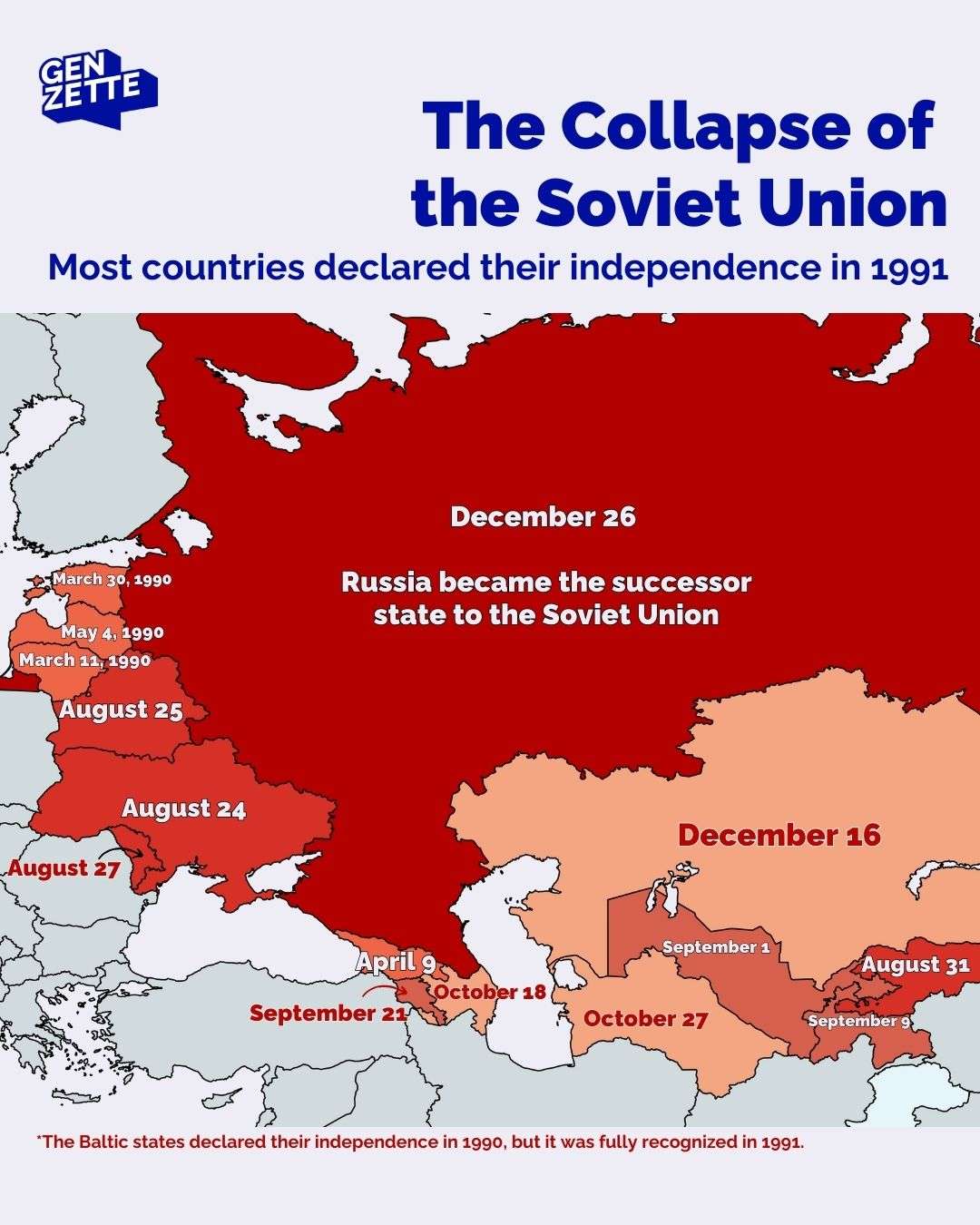The collapse of the Soviet Union
author: gen.zette/instagram, added on: 2025-11-02

gen.zette:
The period from August through December is marked with independence celebrations across Eastern Europe, the Caucasus, and Central Asia. These dates trace back to 1990–1991, when the Soviet Union unraveled and its republics declared independence.
ㅤ
By the late 1980s, the USSR faced severe economic stagnation, a costly arms race with the West, and growing dissatisfaction in its republics. Mikhail Gorbachev’s reforms unintentionally weakened central control and encouraged national movements.
ㅤ
In 1990–1991, the Baltic states (Lithuania, Latvia, Estonia) led the push for independence, followed by Georgia and other republics. The failed August 1991 coup by hardline communists against Gorbachev accelerated the breakup.
ㅤ
In the months after, one by one, the 15 Soviet republics declared independence. On December 8, 1991, leaders of Russia, Ukraine, and Belarus signed the Belavezha Accords, declaring the USSR dissolved and forming the Commonwealth of Independent States (CIS).
ㅤ
Finally, on December 25, Gorbachev resigned as President of the USSR. The next day the Soviet Union formally ceased to exist.
ㅤ
Author: Andriana Velianyk
Collection: cold-war - Tags: soviet-union, cold-war - Source: instagram.com